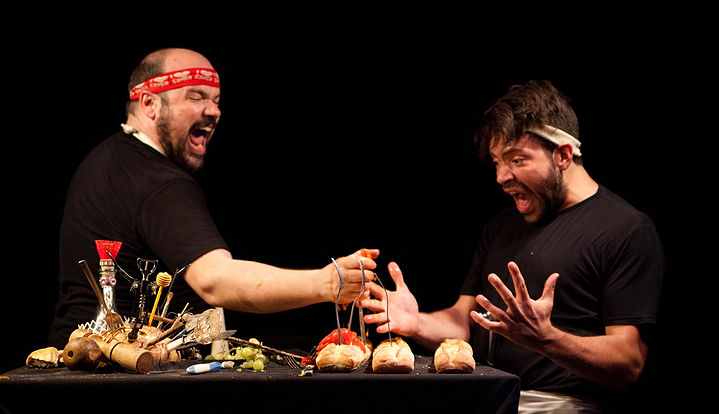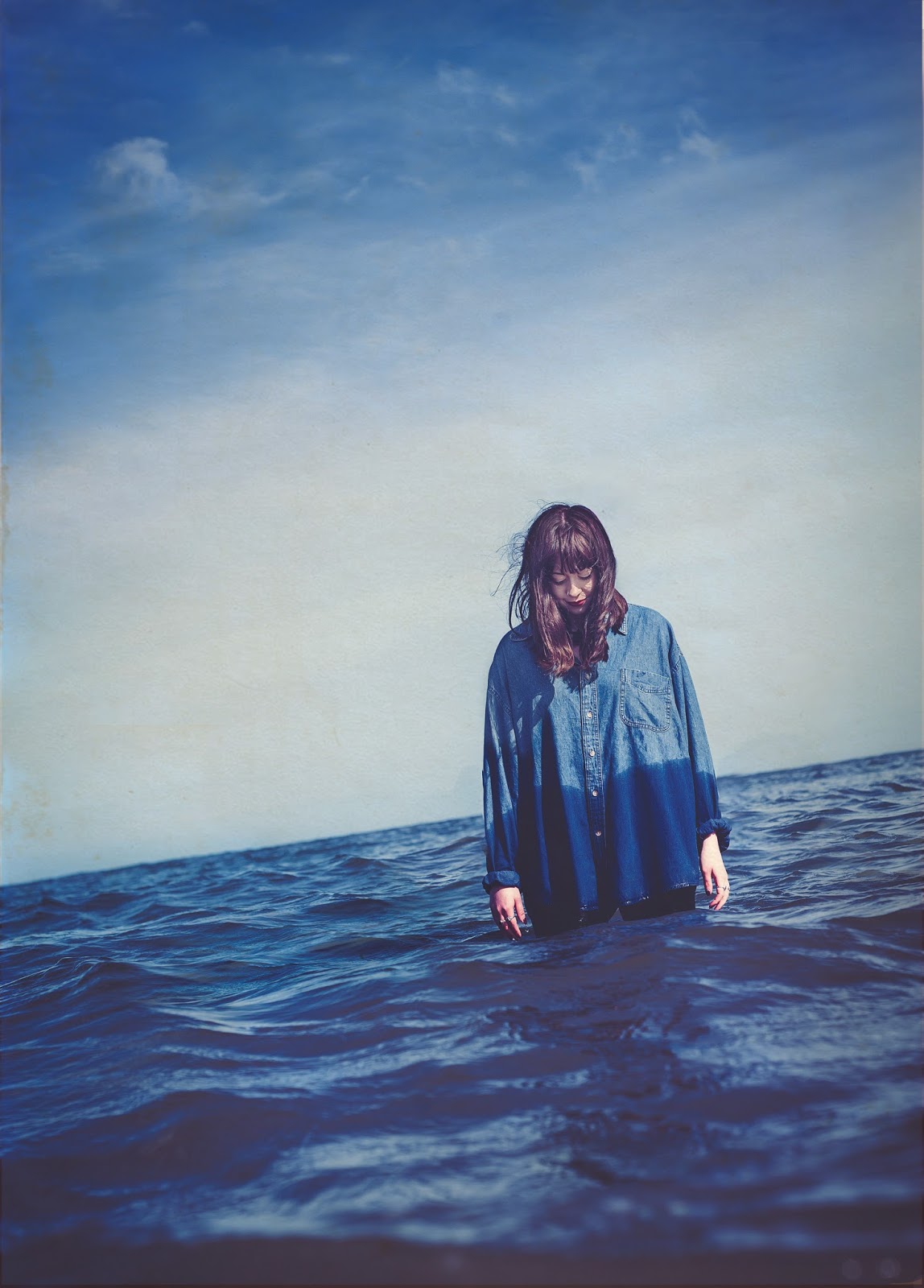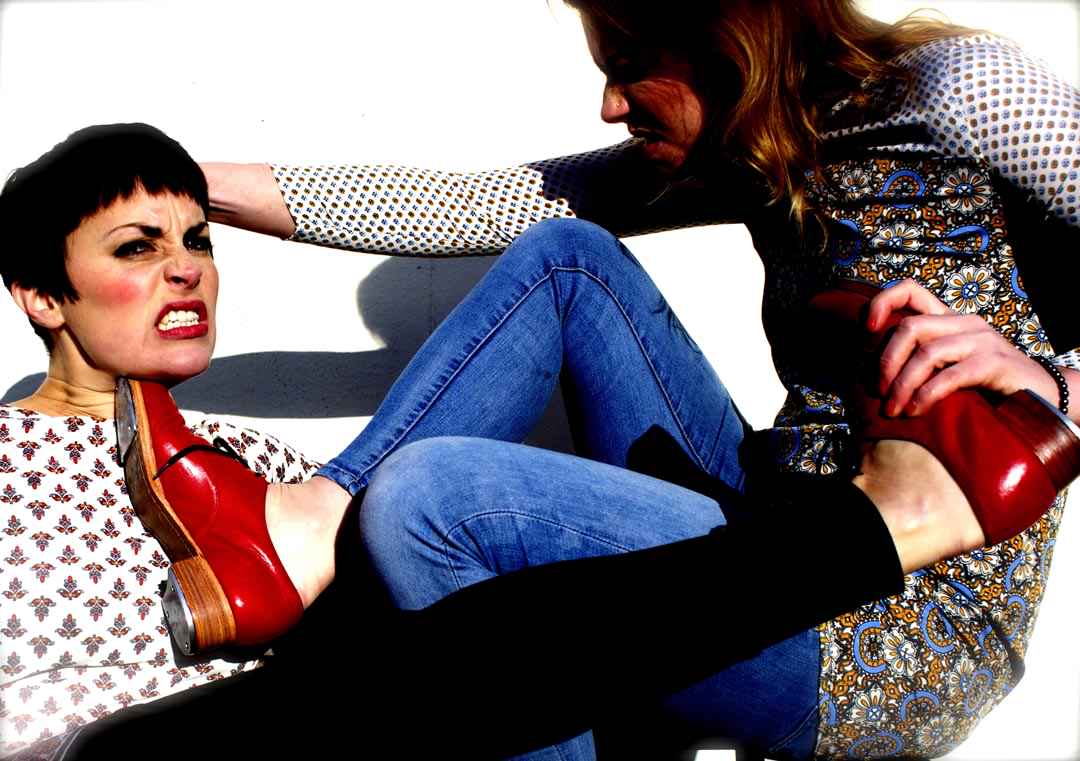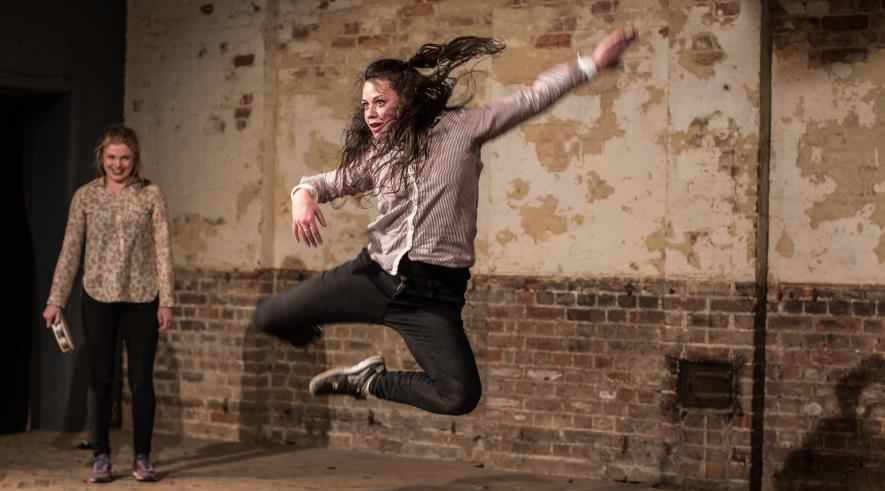Adapted and performed by Olivier Ducas and Francis Monty (Théâtre de la Pire Espèce), Ubu on the Table recreates Alfred Jarry’s 19th century farce, Ubu Roi with puppetry, clowning and chaotic kitchen utensils. Two messy prop tables that look like something from Kitchen Nightmares frame a central table covered in a black table cloth. At each side, two standing lamps with smaller bulbs attached in a ramshackle handmade style focus on the empty table where Ducas and Monty welcome us into the space. They bicker over the angle of the light, warn us about emergency exits and select an audience member in the front row to watch extra carefully without divulging what is going to happen to her during the performance. They do this with an excited tattle and drawn-out speech where they undermine each other, finish each other’s sentences or create sound effects that have the audience warmed and giggling before the show has even started.
There is a good mash-up of love, sauciness and gruesome battles in the narrative which is told using everyday kitchen items and utensils who take their turn to be paraded along the table top in true royal fashion. The pair waste no time in getting down to business as a glass dressing jar with a wide bottom and narrow top, Ubu, is kissed frantically until he literally pops his cork by a mop -like washing up brush (his wife) rendering this a strictly adult show. There is something slightly weird but truly wonderful in watching kitchen items do the dirty with each other in the stylised fashion that Ducas and Monty create with heavy rumbling accents and silly noises.
This adaptation of Ubu Roi (like Jarry’s original) sets the story in Poland. Power, greed and evil actions are satirised, highlighting the absurdity of Machiavellian style rule often aspired to by those in power. The narrative follows a typical journey of usurpation, double-crossing and fighting to maintain power with a healthy dollop of sexual antics in the mix. The glass dressing jar, Ubu, overthrows the King of Poland, played by a large teapot, and his son, the mini teapot, seeks vengeance and declares war. Captain Bordure, the rigid hammer, is an evil Duke who eventually rebels against King Ubu by having raunchy antics with his washing-up-brush wife and going to war with an army of forks. The objects are plain and undecorated except for one – the protagonist Ubu, who has eyes and a coloured handle for a nose. The inanimate objects are unobtrusive and only become interesting in the hands of Ducas and Monty who embody each character from head to toe and whose focus never once flutters away from the speaking object and his respective human. This is a style of puppetry where the expression and communication is centered around the puppeteer, both man and object become one; however rather than the human fading into the background these two do quite the opposite. They create a piece on three planes: their whooshing sound effects in the background, their speech and embodiment in the position of particular characters in the mid-plane, and their manipulation of the objects in the foreground. This makes the piece fast moving, full of content and constantly engaging.
In a play on the nickname taken from the original title, King Turd, this adaptation takes poo references to the extreme, using them as a metaphor for the treatment of society and as literal events in the narrative. When a scene is created in the throne room, a red woollen scarf rolls out and trumpet introductory noises, mimicking those used to announce entry to a great hall, are repeated between sentences at top speed. This creates the most vivid of scenes with minimum objects and decorations. The same scene-setting reoccurs for King Ubu with toilet paper rolled out in place of a red carpet in a play on the throne room. Constipation, diarrhoea and general guttural functions are a prominent theme in the work taking a large role in the battle of loaves with cutlery sticking out of them to help defend his rule.
Once in power, the mop wife spends all of Ubu’s money so they need to kill the Nobles to gain their wealth. A brain-zapping machine flies in for a wonderful scene where Noble spoons are catapulted from the ruler towards the quivering audience member selected at the start of the show. The conversations, deliberations and tactics used but each silver spoon Noble before he is executed are hilarious, the suicide jumps are ridiculously dramatic, as is every entry and exit of a character. Corkscrews helicopter in and the Duke gallops, as does his human counterpart, in a rigid posture drawn from the characteristic of the hammer.
When Ubu sends a wooden toy pepperpot to spy on the Duke, a tabletop tango emerges between the Duke hammer and The Queen washing-up-brush who are sensual, sexy and downright dirty with each other, mirrored by the wooden spy who is following their every move. The recounting of the events to the King Ubu, who requires a full demonstration from the pepper pot spy, are the icing in the cake for this scene.
The joy and sophistication of this piece lies in the thorough embodiment and expression of so many different characters by Ducas and Monty who take on board the object’s features to create their portrayal. The adaptation and imaginative recreation of characters and the satirical nature of the play that appeals to a contemporary audience make the work more poignant, particularly as it is performed in several languages across several countries. Most of all, I laughed from beginning to end at the endearing teapots and animated, charismatic performers.





